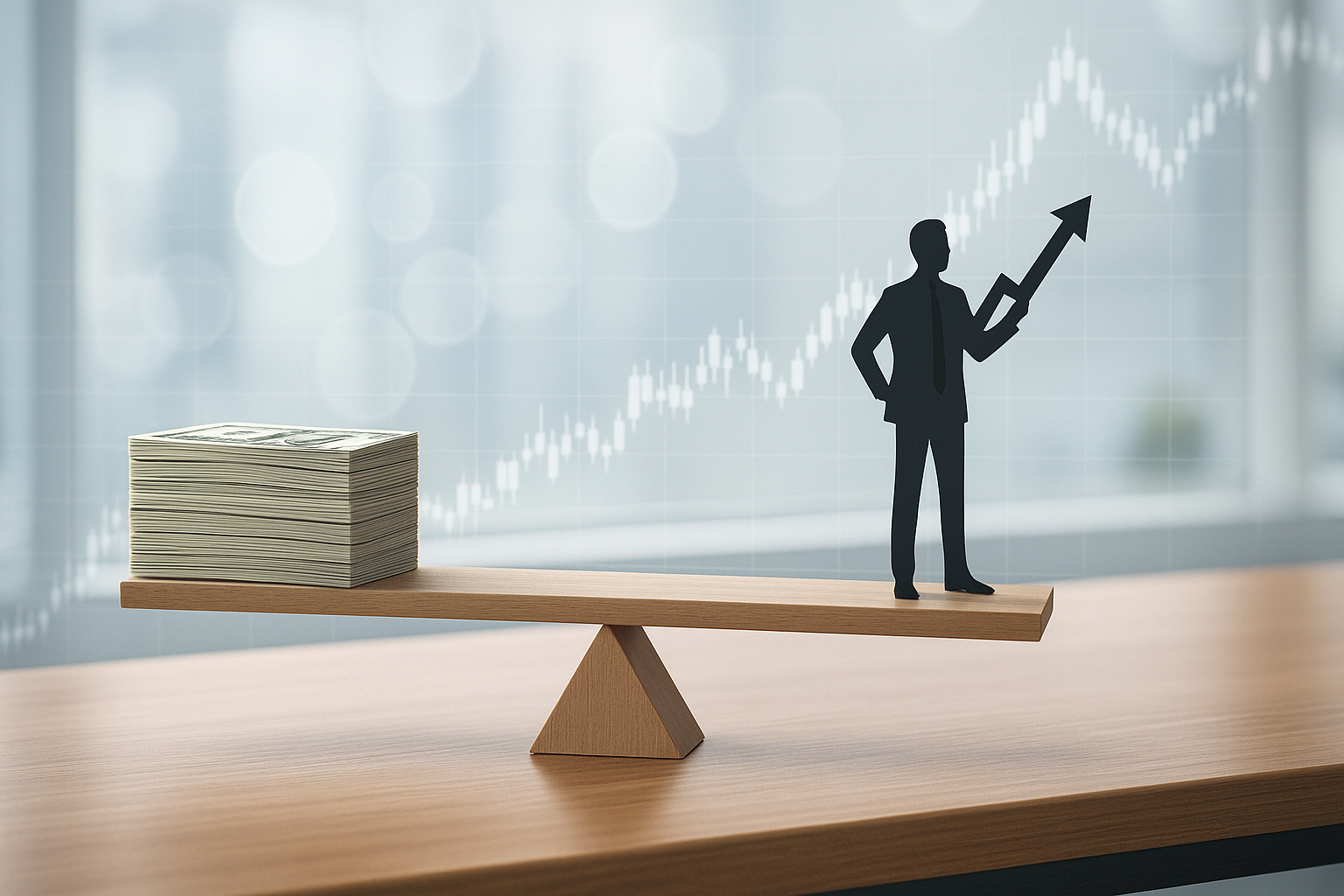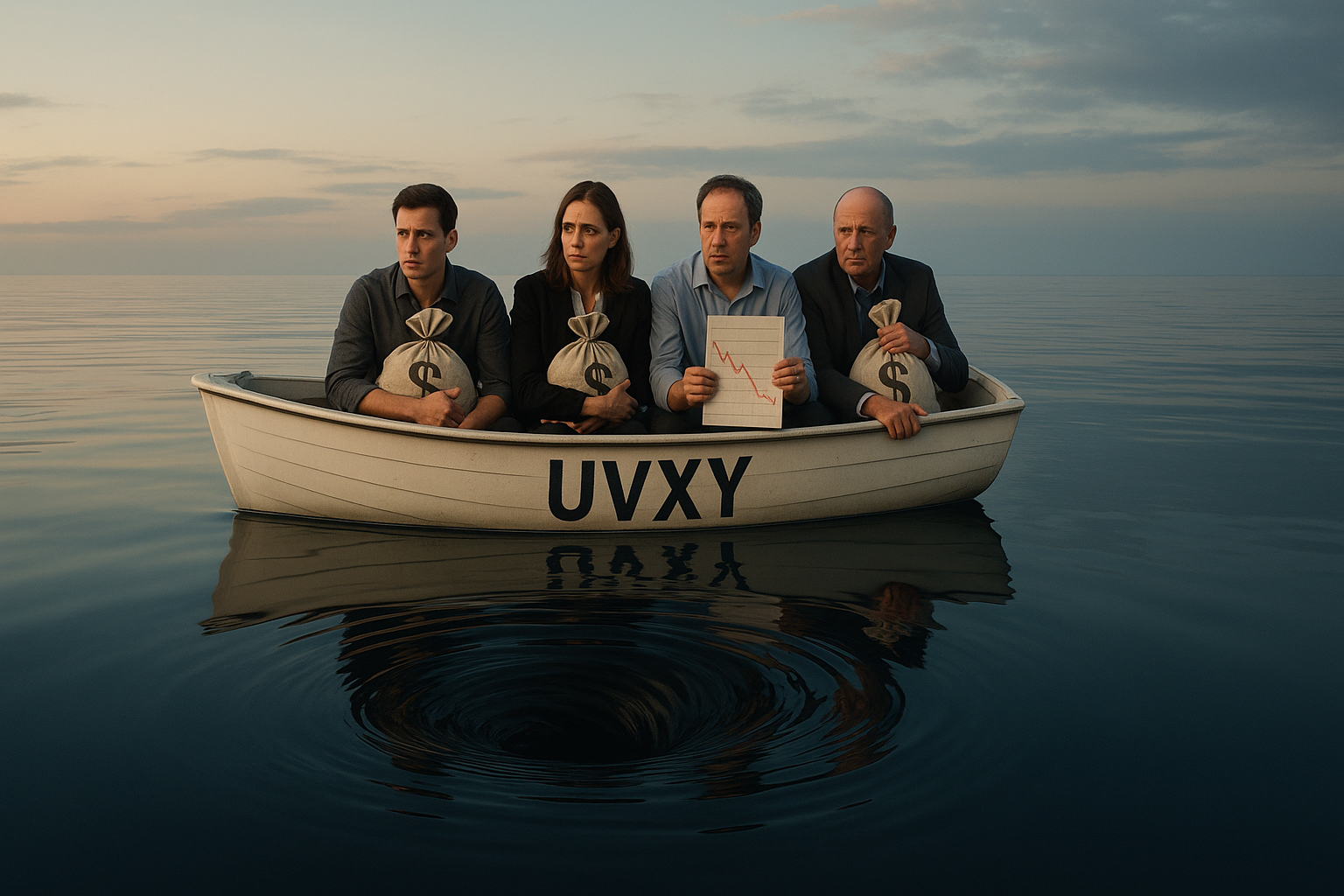In the world of investing, there's perhaps no more maddening question than what to do when markets seem frothy. Do you clutch your cash like pearls, waiting for the inevitable correction? Or do you grit your teeth and keep buying, praying you're not the sucker at the table?
I've been talking with investors grappling with this exact dilemma for months now. Many who bravely bought during last April's market wobble are now watching in a mixture of delight and horror as their portfolios climb to what some veterans are calling "stupid season" valuations.
The Cash Trap
Here's the brutal truth about market timing—it's a fantastic way to feel smart while actually shooting yourself in the foot.
Cash isn't neutral. It's not "playing it safe." Cash is actively bleeding purchasing power while inflation chews through it like termites through a beach house. And inflation has been particularly hungry lately.
"The investors I know who pulled out in 2017 because 'valuations can't possibly go higher' are still waiting for their vindication," a portfolio manager at a major Boston firm told me last week. "Meanwhile, they've watched the S&P 500 double, even with that COVID crash we all try to forget."
Finding Balance When Nothing Seems Balanced
Looking at quality companies like Waste Management (WM) and Google (GOOGL) suggests an instinct for balance that's probably smarter than it first appears. Garbage collection isn't sexy, but guess what? People don't stop producing trash during recessions. (If anything, we might make more—have you seen what stress-shopping looks like?)
Google, meanwhile, has essentially become digital infrastructure. It's less a company and more a utility we all depend on—with profit margins traditional utilities can only dream about.
This combination—defensive positioning with growth potential—creates what investing nerds call a "barbell approach." One end holds the boring-but-reliable businesses that keep chugging along when everything goes sideways. The other end holds companies driving actual transformation.
Beyond "VOO and Chill"
Look, there's nothing wrong with the index-fund approach that's become investing orthodoxy. Parking money in a low-cost S&P 500 fund like VOO and ignoring the noise has made countless investors wealthy.
But... some of us just can't help ourselves. We want to be more engaged. We see opportunities in specific segments. And sometimes—occasionally—we might even be right.
For those inclined toward a more active approach (while hopefully avoiding the worst active-investing pitfalls), several themes seem particularly relevant now:
Quality at a Reasonable Price: This isn't about finding the absolute cheapest stocks—that's usually a trap. It's about finding fundamentally solid businesses that aren't priced for absolute perfection.
Structural Shift Beneficiaries: The pandemic didn't create new trends so much as it strapped rocket boosters to existing ones. Cloud computing, e-commerce, digital payments—companies leading these transitions can sometimes justify those eye-watering multiples. Sometimes.
Inflation Protection: With central banks having printed enough money to wallpaper the moon, assets with intrinsic value serve as portfolio insurance. This includes select commodities, real estate, and companies with actual pricing power (not just those claiming to have it).
International Exposure: After a decade-plus of U.S. market dominance, valuations abroad are starting to look... well, less insane. Europe, Japan, and emerging markets all suggest potentially higher future returns, assuming the dollar doesn't continue its impersonation of Superman.
The Psychology Problem
Having covered market cycles since the dot-com era (yes, I'm dating myself), I've noticed that our biggest investing problems aren't mathematical—they're psychological.
The real danger isn't market corrections. Those are inevitable, like Boston traffic or bad Netflix original movies. The danger is making panic-driven decisions during volatility that torpedo your long-term financial goals.
Some of the most successful investors I've interviewed over the years weren't necessarily the smartest or most knowledgeable. They were simply the most temperamentally suited to handle uncertainty without overreacting.
A Middle Path
So what's the practical approach for our current "everything feels bubbly" moment?
Maybe it's the middle path—gradually deploying capital into businesses you understand and believe in, while keeping some dry powder for opportunities. Not exciting, I know. Moderation rarely makes for good cocktail party conversation.
But in investing, as in many areas of life, the boring middle path often leads to the most interesting results.
Just don't call it "VOO and chill." That's so 2022.



